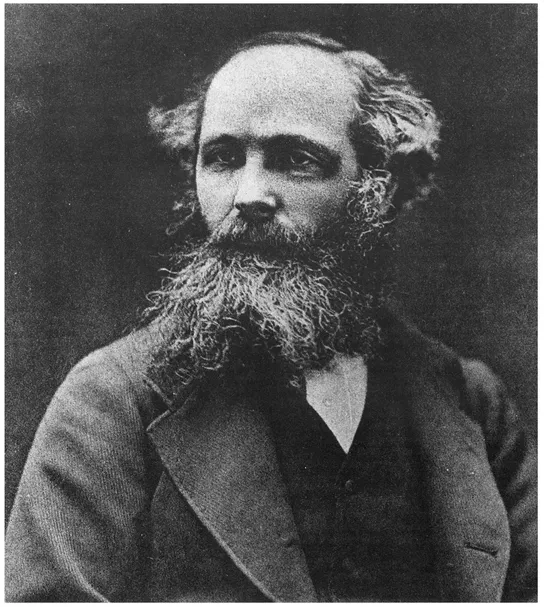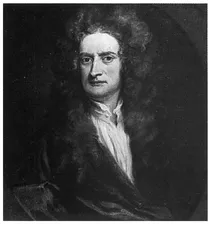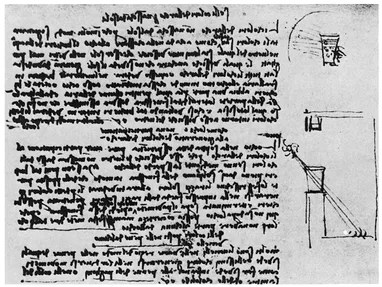DRAMATIS PERSONAE
Issac Newton—whose name is celebrated in his three laws of motion and his theory of universal gravitation—once wrote that, if he had seen a little farther than others, it was because he had stood on the shoulders of giants. Albert Einstein also stood on the shoulders of giants—those of Isaac Newton and James Clerk Maxwell.
All three men, in their own lifetimes, were members of the Royal Society of London for Improving Natural Knowledge, or, simply, the Royal Society. This, the oldest scientific society in Great Britain, began informally in 1645 with weekly meetings of “divers worthy persons, inquisitive into natural philosophy and other parts of human learning, and particularly of what hath been called the New Philosophy or Experimental Philosophy.”1 Some of the first meetings were held at the Bull Head Tavern, Cheapside, one of several homes that preceded the present one at Carlton House Terrace, not far from Trafalgar Square. The Society was formally recognized in 1660 by Charles II, and it was incorporated by Royal Charter in 1662.
Early in 1672, Newton sent a description of his new reflecting telescope to the Royal Society; it was read to the members during the meeting at which he was elected a Fellow of the Society. In replying to the notice of election, Newton proposed to present “an account of a philosophical discovery, which induced me to the making of the said telescope . . . being in my judgement the oddest if not the most considerable detection which hath hitherto been made into the operations of nature.”2 Newton had physically separated white light into its component colors by passing the light through a glass prism.a This, and related discoveries, led him, the following year, to devise his theory of light being a stream of corpuscles, or particles.
Sir Isaac Newton (1642–1727)
Sir Godfrey Kneller (1646–1723) painted this portrait in 1702.
Perhaps the most important contribution to science that the Royal Society has made in its three centuries of existence is its early role in publishing Newton’s masterful account of his discoveries: Mathematical Principles of Natural Philosophy—the Principia. The book was licensed for publication in 1686 by the then president of the Royal Society, Samuel Pepys—amateur scientist, amateur musician, treasurer of the Royal Fishery, member of Parliament, Secretary of the Admiralty—best known today for his daringly honest, secret account of his times, the Diary.
Just as Isaac Newton dominated the scientific scene in the seventeenth century, so Albert Einstein dominates that of the twentieth century. World renowned for his introduction and development of the theory of relativity, Einstein became a foreign member of the Royal Society in 1921, the same year for which he received the Nobel Prize, although it was not awarded until 1922. The citation for that prize does not mention the theory of relativity explicitly; it reads “for his services to Theoretical Physics and especially for his discovery of the law of the photoelectric effect.”
Newton: “Light is not similar or Homogenial, but consists of Difform Rays, some of which are more Refrangible than others”
This charming representation of Newton’s discovery (taken from Voltaire’s Eléments de la Philosophie de Newton (1738) ) shows a beam of sunlight that passes through a small hole in the window shutters, traverses a prism, and falls upon a screen where it appears spread out into the whole range of colors.
The latter refers to Einstein’s role in reintroducing the particle nature of light, which Newton had proposed more than two centuries earlier. Against it was ranged the wave theory suggested by Christian Huygens (1629–1695) in 1690. Although there were doubters—Benjamin Franklin was one—Newton’s authority had kept the particle theory in the forefront until the nineteenth century, when the wave theory won general acceptance (see Box 1
1). Einstein’s discovery was not a return to Newton, however; the truth that ultimately emerged is more subtle than either of the two alternatives and transcends both of them. This part of Einstein’s legacy—it concerns the laws of atomic physics—receives occasional mention in subsequent chapters. It is, however, outside the general framework of this book, which is focused on Einstein and relativity.
Einstein is a household word. Newton has his fan club.
Nature and Nature’s laws lay hid in night:
God said, Let Newton be! and all was light.
ALEXANDER POPE (1688–1744)
Leonardo da Vinci’s drawing of his demonstration that sunlight can be decomposed into distinct colors
In this experiment, which preceded Newton’s by more than a century, a glass of water produced the same effect as did Newton’s prism. The accompanying description of Leonardo’s experiment appears in his characteristic left-handed mirror writing.
BOX 11 Theories of Light
Newton’s corpuscular theory had the advantage, in the eighteenth century, of giving an obvious account of the straight-line propagation of light in a uniform medium. The theory could also account for the reflection of light from a surface and the refraction of light as it crosses the boundary between two optically different transparent media—air and water, for example. Newtonian mechanical concepts predicted that the speed of light would increase in an optically denser medium (here, water.) The wave theory of Huygens could also explain these phenomena but required that the speed of light decreases in an optically denser medium. But, before the crucial experiment measuring that speed was performed, another phenomenon tilted the balance between the confronting views.
The corpuscular theory states that any obstacle in the path of a light beam must produce a sharp shadow. Yet, even in Newton’s time, it was known that shadows are not perfectly sharp, a phenomenon called diffraction. At the beginning of the nineteenth century, Thomas Young (1773–1829) introduced the wave concept of interference of light, to account for a striking example of diffraction, which is referred to as a diffraction pattern. You can see one for yourself.
Take two straight-edged cards and, with the edges in close proximity, hold them, very close to your eye, toward a strong light, blocking it out, except for what you can see through the slit between the edges. As the gap between the edges is narrowed, there will appear in the slit a succession of dark and bright lines parallel to the edges. Young’s explanation for those lines was that waves passing through a narrow slit are diffracted—deviated from a straight-line path. (The phenomenon is commonplace with sound waves; out of sight is not out if earshot.) As a result, each point of the image is produced by waves coming from different parts of the slit. These waves travel different distances to an observer’s eye, alternately canceling and reinforcing each other to produce dark and bright bands of light called interference fringes.
With the accumulation of such experimental evidence favoring the wave theory, it was an anticlimax when, in 1850, Jean Foucault (1819–1868) showed experimentally that light traveling in water is slowed down, not speeded up.
How, then, was it possible for Einstein to revive this discredited concept of light? By changing the laws of mechanics, particularly as they apply to light.
But James Clerk Maxwell (1831–1879), whose scientific accomplishments have had much greater effect on our daily lives, is comparatively unknown. Who was this man, and what did he do?
He was the last of a line of the well-to-do, land-owning Clerk family of Scotland; the Maxwell name had been added in order to retain lands acquired by marriage. The only surviving child of middle-aged parents, he was born in Edinburgh in the same summer in which Michael Faraday made an epochal discovery, one that Maxwell would later use as a cornerstone of his greatest achievement. The child soon displayed an omnivorous curiosity and a remarkable memory—he was different. Those characteristics, combined with a speech defect and shyness, led to a lonely existence at school, where he was the constant object of torment by his classmates. His stout resistance to this persecution was leavened by an irrepressible sense of humor. He survived and flowered. Later in life he remarked sadly, “They never understood me, but I understood them.”
The early death of his mother, at age forty-eight, had put the boy’s education into his father’s hands. Although the doting father, John Clerk Maxwell, blundered badly in his initial choice of a tutor, who turned out to be brutal, James’s later successes at school led John to take the boy to meetings o...







